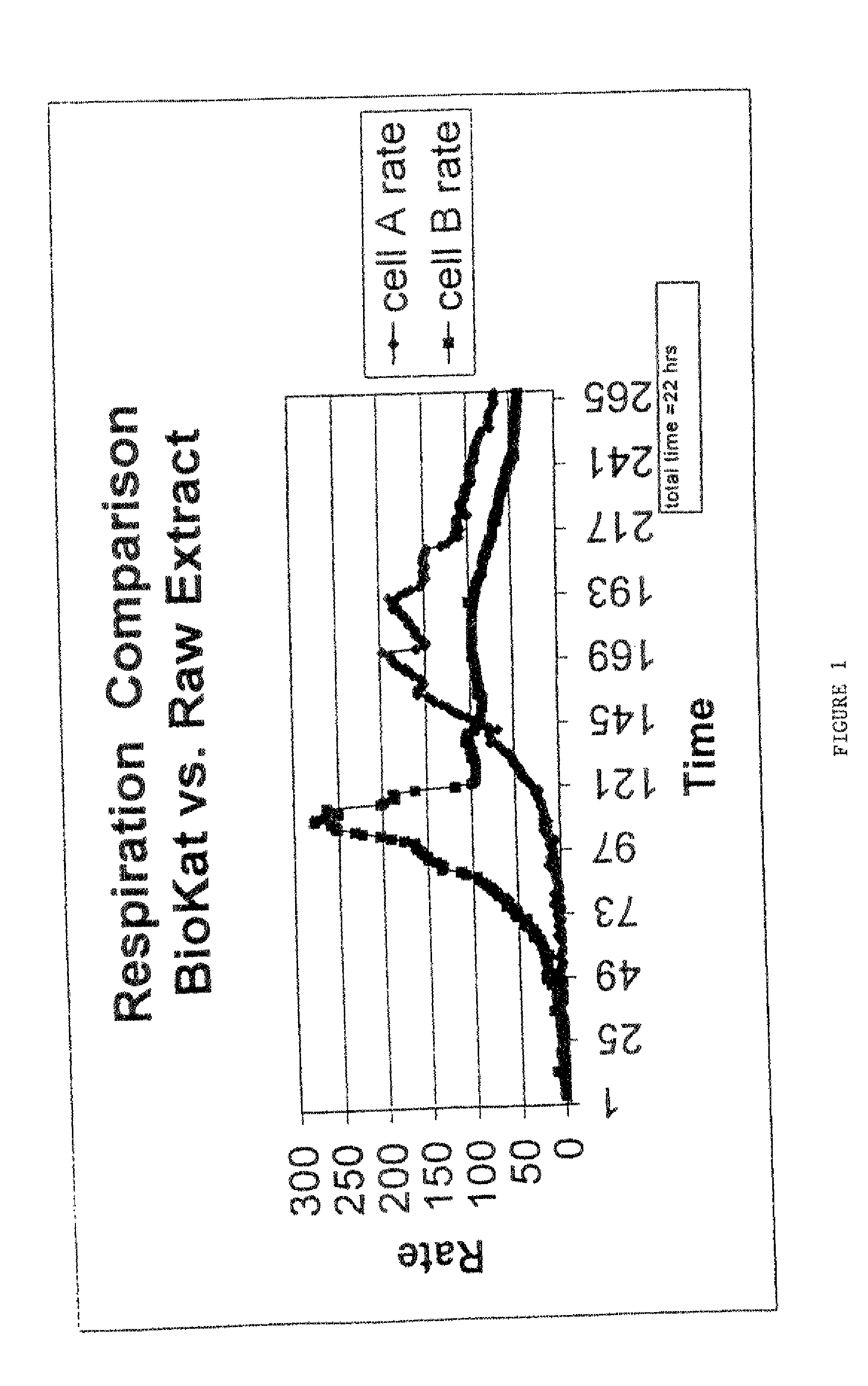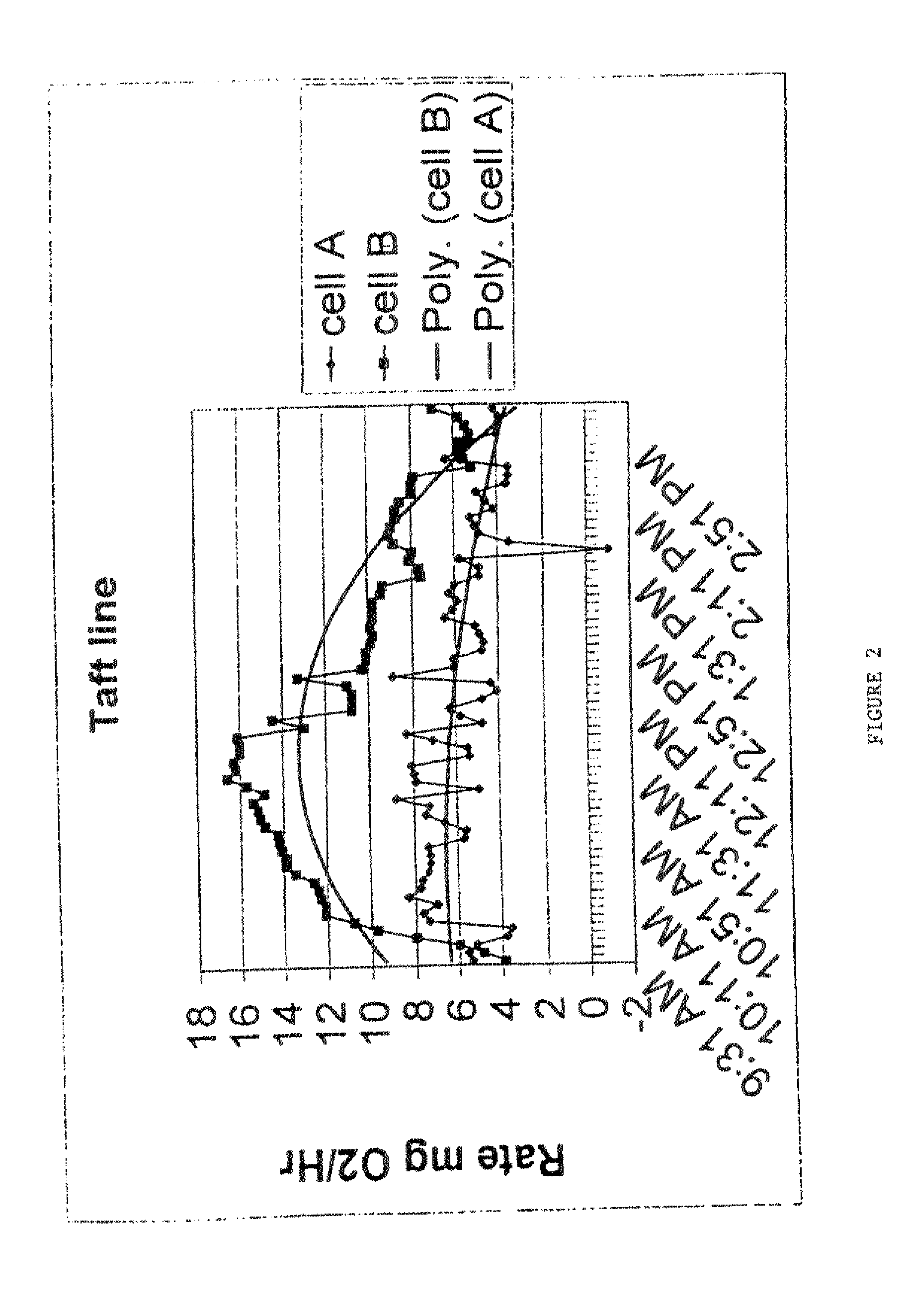Method of treatment for waste water using microbialgrowth promoter
a technology of microbial growth promoter and waste water treatment, which is applied in the direction of water/sludge/sewage treatment, biofuels, chemical instruments and processes, etc., can solve the problems of time-consuming and labor-intensive waste water treatment in a conventional waste water treatment facility, and achieve the effect of accelerating the ra
- Summary
- Abstract
- Description
- Claims
- Application Information
AI Technical Summary
Benefits of technology
Problems solved by technology
Method used
Image
Examples
example 1
[0046]Initial sampling was performed at the City of Sunrise, Florida Sawgrass wastewater treatment plant, for the purpose of establishing laboratory procedures and to verify proper equipment operation. Samples were collected from the aeration basin, headworks and effluent and raw samples were analyzed for TSS.
The results are as follows:
Mixed Liquor 30 min. Sett. Solids—56%
MLTSS—3595 mg / l
Effluent TSS—2.04 mg / l
Raw TSS—128.8 mg / l
The test results are as expected and the performance of all laboratory equipment is satisfactory.
example 2
[0047]Samples were collected at the Sawgrass facility, from the aeration basin and from the discharge manifold of the return activated sludge pumps (RAS). The purpose is to familiarize the technical staff in the operation of the respirometer and the interpretation of the respirometry graph results. The respirometer was set up and calibrated and 1600 ml of mixed liquor from the aeration basin was added to the sample chamber. The instrument was run until a constant endogenous respiration rate was established. The rate was determined to be 7.4 ml / L / hr. The sample chamber was drained, and 1800 ml of RAS was added. This sample was also run until a constant endogenous respiration rate was established. This rate was determined to be 9.0 ml / L / hr. The endogenous rate of the return activated sludge is typically three times higher than that of the mixed liquor. It was determined that a process modification was made by the plant operator, where raw waste water was entering the aeration basin, i...
example 3
[0048]The RAS sample from the previous analysis was retained in the sample chamber for another series of tests, The endogenous rate of respiration was 11.50 ml / L / hr at the start of the test procedure was to add increasing amounts of food (beer), and determine the initial respiration rates, and time required to metabolize the food (treatment time). The results of the tests are as follows:
3 ml: IRR=26.17 ml / l / HR
TT=102 min.
[0049]6 ml: IRR=44.56 ml / L / hr
TT=123.6 min.
[0050]9 ml: IRR.=43.12 ml / l / HR
TT=140.4 MIN.
[0051]The test results demonstrate the increasing respiration rates and treatment times due to the respective amounts of added food.
PUM
| Property | Measurement | Unit |
|---|---|---|
| residence time | aaaaa | aaaaa |
| rate of respiration | aaaaa | aaaaa |
| organic | aaaaa | aaaaa |
Abstract
Description
Claims
Application Information
 Login to View More
Login to View More - R&D
- Intellectual Property
- Life Sciences
- Materials
- Tech Scout
- Unparalleled Data Quality
- Higher Quality Content
- 60% Fewer Hallucinations
Browse by: Latest US Patents, China's latest patents, Technical Efficacy Thesaurus, Application Domain, Technology Topic, Popular Technical Reports.
© 2025 PatSnap. All rights reserved.Legal|Privacy policy|Modern Slavery Act Transparency Statement|Sitemap|About US| Contact US: help@patsnap.com


